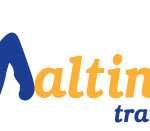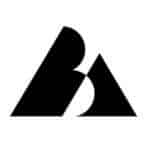Sports Massage classes teach participants to use non-invasive techniques to prevent and treat sports-related injuries. The practice involves the manipulation of soft tissue and joints in order to release muscular tension, speed up the recovery process and help improve the client s mobility and athletic performance.
However, sports massage is not solely reserved for those involved in sporting activity; it is also a highly effective treatment for anyone bearing minor injuries or suffering from restricted movement as it can help stimulate blood flow and break down the knots in the muscles (know as adhesions) that are often the source of discomfort and distress.
What does it involve
Those interested can begin by enrolling on an Introduction to Sports Massage programme. Such entry-level courses are generally quite short and affordable and will provide learners with a good general overview of what the practice of sports therapy involves. Participants will be given training in the practical and theoretical elements of sports massage. They will also be given instruction on how to implement deep-tissue massage techniques using their elbows, forearms and knuckles as well as their fingers and hands.
Students who wish to go on to work as massage therapists should consider augmenting their knowledge by studying for an ITEC (Irish Training and Education Centre) Certificate (level 3) in Sports Massage Therapy. Certificate-level Sports Massage programmes will teach students about important additional elements of the practice such as functional anatomy and physiology, nutrition, classification of sports injuries and the stages of healing. Not only will they learn how to treat sports injuries, but they will also develop the skills and techniques needed in order to plan, prepare and apply a range of sports massage methods to uninjured clients too. Typical modules on a certificate Sports Massage course include: Nutrition for Sports Therapies, Pre- and Post-Event Massage for Athletes, Hygiene, and Physiological and Psychological Benefits of Massage.
While graduates of certificate courses may go on to secure work as sports therapists, many choose to advance their education by enrolling on a Level 4 Certificate course, or by pursuing a part-time Diploma in Sports Massage. By doing so they will develop a more detailed understanding of the human anatomy, including muscle groups, major joints, and the associated ligaments and tendons. Graduates at these levels will be trained in treating injuries such as whiplash, tennis elbow, lower back pain, hamstring strains, back and neck injuries, shin splints and ankle sprains, along with general soft tissue damage. Typical modules include Repetitive Strain Injuries, Sports Massage Techniques (Frictions, Muscle Energy Technique, Soft-Tissue Release), and Thermotherapy and Cryotherapy Techniques. Those studying sports massage therapy at this level will generally also be given the chance to gain practical experience by applying their knowledge to the treatment of real injuries.
Why do it
Growing public interest in health and fitness has led to an increase in demand for qualified therapists. This is because sports massage, when applied skillfully, is widely recognised as the most effective way of releasing muscular tension and preventing injury to the muscular-skeletal system.
What comes next
Certificate-level graduates are qualified to work with uninjured athletes and can perform pre- and post-event massages, aid with recovery time, treat basic injuries, and so on. They may gain employment in teams, leisure centres, nursing homes.
Graduates with a Diploma or level 4 Certificate in Sports Massage Therapy may also treat members of the public, and many graduates go on to successfully set up their own private practices. Other graduates have also gained employment within physiotherapy practices, hospices, or as osteopaths and chiropractors.
At a glance
A part-time Introduction to Sports Massage course may run for up to 10 weeks. A part-time Sports Massage Diploma programme will take 6 months to complete.

















